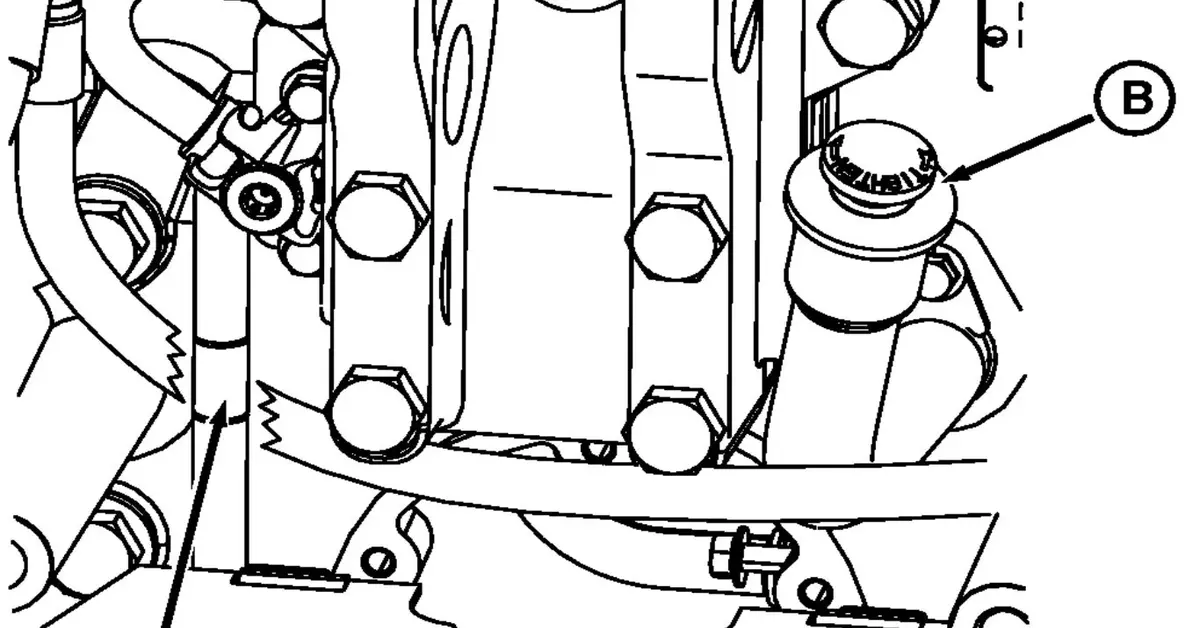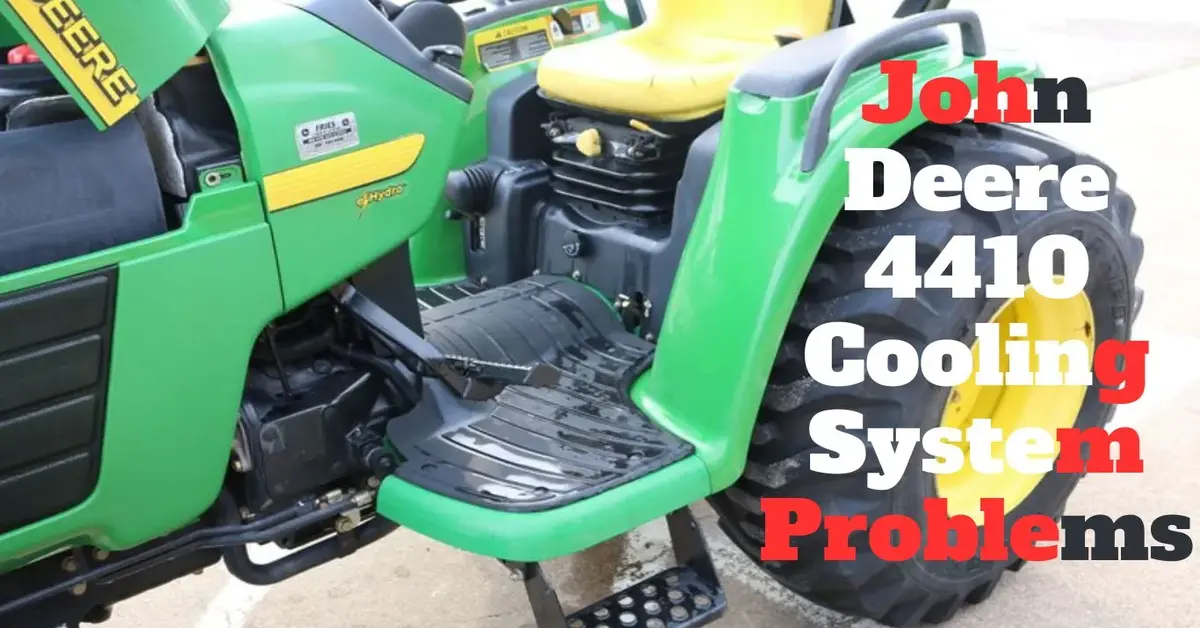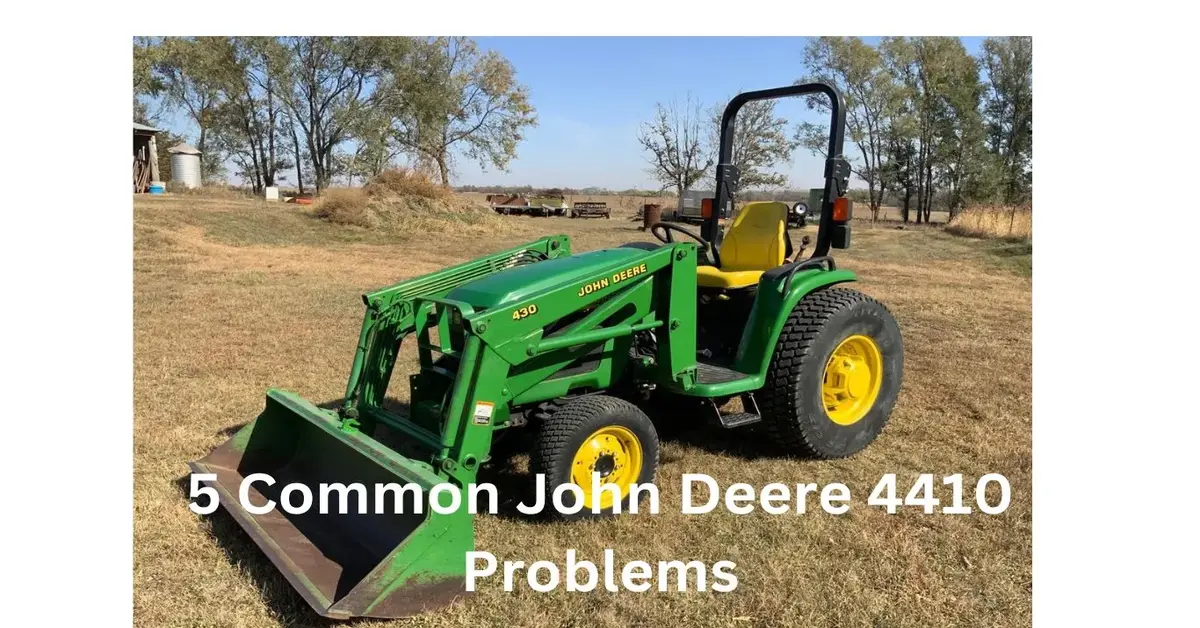The John Deere 4410 is a popular tractor known for its durability and versatility. It’s widely used in agriculture and landscaping for various tasks, from plowing fields to mowing lawns. With its compact size and powerful performance, the 4410 is a favorite among farmers and landowners alike.
Importance of Recognizing Common Problems for Maintenance and Efficiency
Knowing the common problems of your John Deere 4410 is crucial for keeping it running smoothly and efficiently. By being aware of these issues, you can address them promptly, preventing more significant damage and costly repairs down the line. Regular maintenance and timely solutions can ensure that your tractor stays in top condition, ready to tackle any job with ease. So, let’s dive into the five most common problems and their solutions!
Problem 1: Engine Starting Issues
Description of the problem
Starting the engine of your John Deere 4410 tractor can sometimes be a challenge. You might find it difficult to get the engine running smoothly, which can be frustrating, especially when you have work to do.
Possible causes
There are a few common reasons why you might experience engine starting issues with your John Deere 4410. One potential culprit could be problems with the battery. If the battery is old or not holding a charge, it may struggle to provide enough power to start the engine. Another possible cause could be issues with the fuel system. Clogs or leaks in the fuel lines can prevent the engine from getting the proper amount of fuel it needs to start. Additionally, faults in the ignition system, such as worn-out spark plugs or a malfunctioning ignition coil, can also contribute to starting problems.
Solutions
- Check and replace the battery if necessary: Start by inspecting the battery terminals for corrosion or loose connections. If the battery is old or not holding a charge, it may be time for a replacement. Make sure to choose a battery that meets the specifications recommended for your John Deere 4410.
- Inspect the fuel system for clogs or leaks: Carefully examine the fuel lines, filters, and injectors for any signs of clogs or leaks. If you notice any issues, clean or replace the affected components as needed. It’s also essential to check the fuel tank for any debris or contaminants that could be affecting fuel flow.
- Verify the ignition system components for wear or damage: Take a close look at the spark plugs, ignition coil, and distributor cap for any signs of wear or damage. Replace any faulty components and ensure that all connections are tight and secure. Additionally, check the ignition timing to make sure it’s set correctly according to the manufacturer’s specifications.
Read More: John Deere 1025r Brake Problems and Possible Fix!

Problem 2: Hydraulic System Malfunction
Description of the problem
If you notice inconsistencies or failures in the hydraulic functions of your John Deere 4410 tractor, you’re likely experiencing a hydraulic system malfunction. This can manifest as difficulty in lifting or lowering attachments, poor steering response, or unusual noises coming from the hydraulic system.
Possible causes
Several factors could contribute to a hydraulic system malfunction in your John Deere 4410. One common issue is low hydraulic fluid levels. When the fluid levels are too low, it can impair the system’s ability to operate efficiently. Additionally, leaks in the hydraulic lines or connections can lead to a loss of hydraulic pressure, resulting in malfunctions. Faulty components, such as damaged hydraulic cylinders or worn-out seals, can also cause issues with the hydraulic system.
Solutions
- Check and refill hydraulic fluid to the appropriate level: Start by locating the hydraulic fluid reservoir on your John Deere 4410 and checking the fluid level. If it’s low, add the recommended type of hydraulic fluid until it reaches the appropriate level. Be sure to use the fluid specified in your tractor’s manual to ensure proper performance.
- Inspect for hydraulic leaks and repair as needed: Carefully examine the hydraulic lines, fittings, and connections for any signs of leaks. Look for puddles of hydraulic fluid or oily residue around the hydraulic components. If you discover any leaks, repair or replace the affected parts promptly to prevent further damage to the system.
- Test and replace any malfunctioning hydraulic components: If you’ve addressed low fluid levels and repaired any leaks but are still experiencing hydraulic system malfunctions, it’s essential to inspect the hydraulic components for any signs of damage or wear. Test the hydraulic cylinders, valves, and seals for proper operation and replace any malfunctioning parts as necessary. Be sure to use genuine John Deere replacement parts to ensure compatibility and performance.
Read More: John Deere 1025r Pedal Problems and Their Solutions
Problem 3: Transmission Issues
Description of the problem
If you’re experiencing difficulty in shifting gears or noticing a loss of power while operating your John Deere 4410 tractor, you might be facing transmission issues. These problems can make it challenging to maneuver your tractor effectively and can hinder its overall performance.
Possible causes
Several factors could contribute to transmission issues in your John Deere 4410. One common cause is low transmission fluid levels. When the fluid levels are insufficient, it can lead to poor lubrication and increased friction within the transmission, resulting in difficulty shifting gears. Additionally, damaged gears or worn-out clutch components can also cause transmission problems, leading to issues with power delivery and gear engagement.
Solutions
- Check and top up transmission fluid levels: Begin by locating the transmission fluid dipstick on your John Deere 4410 and checking the fluid level. If it’s below the recommended level, add the appropriate type of transmission fluid until it reaches the correct level. Be sure to use the fluid specified in your tractor’s manual for optimal performance.
- Inspect gears for damage and replace if necessary: Carefully examine the transmission gears for any signs of damage, such as chipped teeth or excessive wear. If you notice any issues, it’s essential to replace the damaged gears promptly to prevent further transmission problems. Be sure to use genuine John Deere replacement parts to ensure compatibility and durability.
- Evaluate clutch condition and replace if worn out: Test the clutch operation on your John Deere 4410 to determine if it’s functioning correctly. Signs of a worn-out clutch include slipping, difficulty engaging gears, or unusual noises when shifting. If you suspect that the clutch is worn out, it’s crucial to replace it with a new one to restore proper transmission function. Again, use genuine John Deere replacement parts for the best results.
Read More: John Deere 1025r Differential Lock Problems With Solutions
Problem 4: Electrical Problems
Description of the problem
Electrical problems can be frustrating and can hinder the performance of your John Deere 4410 tractor. These issues may manifest as failures in electrical systems or malfunctioning components, leading to difficulties in starting the tractor or operating its various functions.
Possible causes
There are several common causes of electrical problems in the John Deere 4410. Faulty wiring can disrupt the flow of electricity, causing issues with the tractor’s electrical systems. Blown fuses can also occur due to electrical surges or overloads, interrupting the circuit and preventing proper operation. Additionally, damaged electrical components, such as switches, relays, or solenoids, can lead to electrical failures and malfunctions.
Solutions
- Inspect wiring for any signs of damage or loose connections: Begin by visually inspecting the wiring harnesses and connections on your John Deere 4410 tractor. Look for any signs of frayed wires, corrosion, or loose connections that could be causing electrical issues. If you identify any damaged wiring or connections, repair or replace them as needed to restore proper electrical function.
- Replace blown fuses with appropriate replacements: Locate the fuse panel on your John Deere 4410 and check for any blown fuses. Blown fuses will have a broken filament inside and will need to be replaced with fuses of the appropriate amperage rating. Be sure to use the correct type and size of fuse specified in your tractor’s manual to avoid electrical damage or fires.
- Test and replace malfunctioning electrical components: If you’re still experiencing electrical problems after checking the wiring and fuses, it’s essential to test the various electrical components on your John Deere 4410. This includes switches, relays, solenoids, and other electrical devices. Use a multimeter to check for continuity and proper operation. If any components are found to be faulty, replace them with genuine John Deere replacement parts to ensure compatibility and reliability.
Read More: John Deere 1025r PTO Problems With Troubleshooting Steps

Problem 5: Cooling System Troubles
Description of the problem
Engine overheating or coolant leaks are common issues that can occur in the cooling system of your John Deere 4410 tractor. When the engine overheats, it can lead to serious damage and potentially costly repairs. Similarly, coolant leaks can result in a loss of coolant fluid, leading to inadequate cooling and further overheating problems.
Possible causes
Several factors can contribute to cooling system troubles in your John Deere 4410. One common cause is low coolant levels. If the coolant level is below the recommended mark, the engine may not receive adequate cooling, leading to overheating. Additionally, radiator blockages, such as dirt, debris, or bugs, can obstruct airflow through the radiator, causing the engine to overheat. Damaged hoses or clamps in the cooling system can also result in coolant leaks, further exacerbating cooling problems.
Solutions
- Check and refill coolant to the proper level: Begin by locating the coolant reservoir or radiator cap on your John Deere 4410 and checking the coolant level. If it’s below the recommended level, add the appropriate type of coolant until it reaches the proper level. Be sure to use coolant that meets the specifications outlined in your tractor’s manual for optimal performance.
- Inspect the radiator for any blockages and clean if necessary: Carefully examine the radiator and radiator fins for any signs of blockages, such as dirt, debris, or bugs. Use a soft brush or compressed air to remove any obstructions and restore proper airflow through the radiator. Cleaning the radiator regularly can help prevent overheating and ensure efficient cooling of the engine.
- Replace damaged hoses or clamps in the cooling system: Check the hoses and clamps in the cooling system for any signs of damage, such as cracks, leaks, or deterioration. If you notice any issues, it’s essential to replace the damaged hoses or clamps promptly to prevent coolant leaks and maintain proper cooling system function. Be sure to use genuine John Deere replacement parts to ensure compatibility and durability.
Read More: John Deere 1025r Starting Problems With Troubleshooting Tips
Conclusion
In conclusion, being aware of common problems with your John Deere 4410 tractor can save you time and money in the long run. By understanding the symptoms and potential causes of these issues, you can take proactive steps to address them before they escalate into more significant problems.
Regular maintenance and timely solutions are key to keeping your John Deere 4410 running smoothly and efficiently. Whether it’s engine starting issues, hydraulic system malfunctions, transmission problems, electrical issues, or cooling system troubles, following the outlined solutions can help you resolve these issues effectively.
Remember to check and refill fluids, inspect and replace damaged components, and clean and maintain the various systems of your tractor regularly. By doing so, you can ensure that your John Deere 4410 remains in top condition, ready to tackle any task with ease.
Keep these solutions in mind, and don’t hesitate to seek professional assistance if needed. With proper care and attention, your John Deere 4410 can continue to serve you well for years to come.
